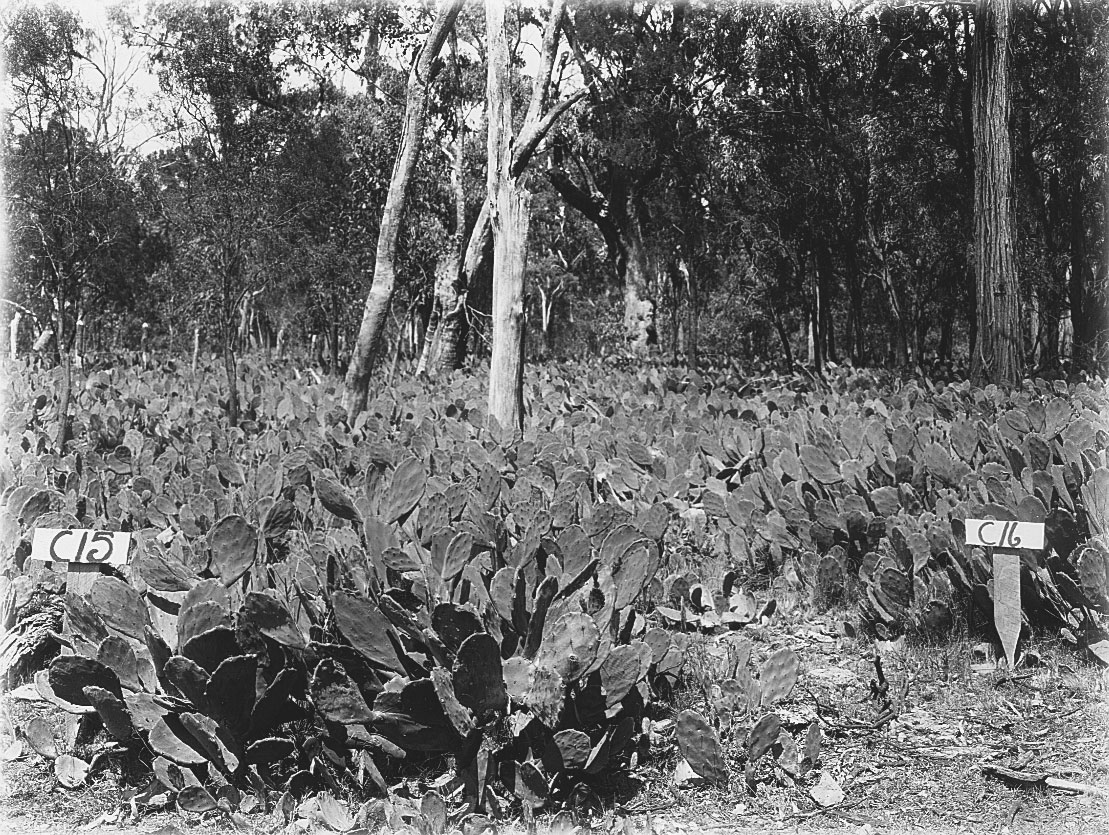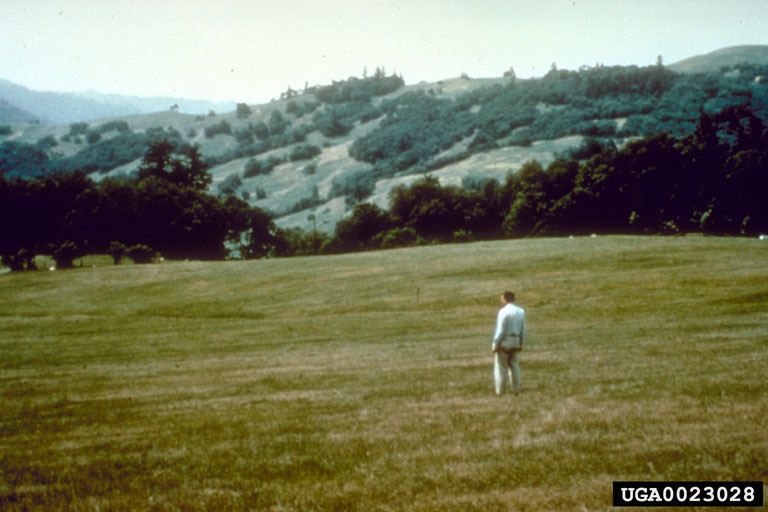Biocontrol Success Stories
Prickly Pear
Cactoblastis cactorum
Some biocontrol agent introductions have resulted in spectacular reductions of their target weeds. For example, in Australia in the 1920s, invasive prickly pear (Opuntia spp.) was smothering large tracts of land and spreading rapidly. Releases of the moth Cactoblastis cactorum effectively destroyed the majority of prickly pear infestations within a decade
This scale of destruction is uncommon for biological control, however. Most biocontrol programs are considered successful when the target weeds are still present but reduced to the point where the damage they inflict is below an acceptable economic or ecological threshold. It is important to bear in mind that in the weed’s native range, the weed is a fixed component of the plant community. Because the goal of weed biological control is to restore the balance between a weed and its natural enemies, eradication should never be the goal for this form of weed control.


Figure 1. Photos of prickly pear infestations before and after release of the biocontrol moth Cactoblastis cactorum in Australia (Queensland Government, Australia; CC BY-NC 4.0)
St Johnswort
Chrysolina
If your goal is to reduce the abundance of common St. Johnswort, biological control may be an appropriate weed management tool. However, by itself, biological control will not completely remove common St. Johnswort from the landscape. If your goal is to eradicate this weed, then you should plan to employ other weed control techniques instead of or in addition to biological control. Once you determine the scope of your common St. Johnswort infestations, review the management tools available—including use of herbicides, mechanical treatments, cultural practices, and biological control—and determine the conditions (when, where, if, etc.) under which it might be appropriate to use each tool or combination of tools.
Biological control agent releases, among other land management strategies, can affect the presence and relative abundance of many other plant species even though the agents do not directly utilize them. If biological control works to remove common St.Johnswort at a site, it will create an empty niche to be filled by alternative—hopefully desirable—vegetation. These indirect effects are the result of changes in common St. Johnswort abundance. As this weed becomes less abundant, the utilization of site resources is altered; some plants become more abundant, while others become less so. Within the overall management plan for your site, it may be important to document the changes in other vegetation after you release your biological control agents.


Photo point for common St. Johnswort infestation a. before and b. after Chrysolina introductions (USDA ARS European Biological Control Laboratory, www.bugwood.org)
Mobile Apps
Record and monitor your biocontrol releases using the free mobile apps
SIMP
Analyze map layers and document changes over time
Vault
Search the vault for available biocontrol resources
Maps
View Distribution maps for agents and host plants
